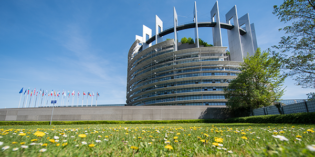European Parliament elections 2019

European Parliament elections 2019: what will happen in Wales?
When electing MEPs to serve in the European Parliament, Wales has been at least a five-party system for a decade. In both the last two contests the top four parties (Labour, UKIP, the Conservatives and Plaid Cymru) each gained one of the four MEPs, and the Liberal Democrats and Greens lost out. This time around the Brexit Party has replaced UKIP and is doing so well that it should gain two seats to Labour’s and Plaid Cymru’s one each. With voters able to cast only a single vote for a party list, the Democratic Audit team reviews likely outcomes and the candidates that could be elected here.

European elections 2019: what will happen in England’s South West?
In recent years the South West of England has become a Conservative stronghold, as the opposition from the Liberal Democrats in rural areas dwindled, restoring an older pattern of Labour challenging from the few big cities like Bristol, Plymouth and Exeter. However, in European Parliament elections, UKIP came first in 2014, winning two of the region’s six seats, and helping shape a strong Leave vote in the 2016 Brexit referendum – an inheritance that now falls to the Brexit Party. With regional Conservative support now at unprecedentedly low levels, the three strong pro-Remain parties are vying to get two seats between them. With voters able to cast only a single vote for a party list, the Democratic Audit team reviews likely outcomes and the main potentially electable candidates.

European Parliament elections 2019: what will happen in the North West of England?
The North West is traditionally a stronghold for Labour, who came first and took three of the region’s eight seats the last time European Parliament elections were held in 2014. This time, however, the Brexit Party are outperforming UKIP’s past success in this area, and will win multiple seats from the region’s majority of pro-Leave voters in the 2016 referendum. The Conservative’s decline opens up a chance for one of the three strong pro-Remain parties to also win a seat, with the Lib Dems looking strongest and the Greens in with a chance of a seat. With voters able to cast only a single vote for a party list, the Democratic Audit team reviews likely outcomes for the parties and the main potentially electable candidates.

European elections 2019: what will happen in London?
With eight seats to play for, London is the jewel in the crown of the European Parliament elections, and the area certain to get most media attention. Long a bastion of Remainers (voting 60:40 to stay in Europe in 2016) the capital has also been increasingly strong for Labour in recent years. However, Corbyn’s ambiguity over his EU stance seems to have recently begun to erode the party’s standing, especially for the European Parliament elections. Two recent polls give the Liberal Democrats two seats, and one has them beating Labour into first place. Brexit Party poll ratings are relatively weak in the capital, but they are still on track to win two seats. The Greens and Tories seem sure of winning a seat each. And Change UK still has some chance here. With voters able to cast only a single vote for a party list in this PR election, the Democratic Audit team reviews the likely outcomes for the parties, and looks at who the potentially electable candidates are.

European elections 2019: what will happen in England’s North East region?
Although the European Parliament elections are proportional ones, in a small region of three seats like the North East only the top two or three parties can hope to win a single seat, and only a strong party (with more than 30% support) can hope to win two. So this will likely be the least proportional region in the upcoming European Parliament elections, which take place on 23 May – and one of those where tactical voting is most useful. With voters able to cast only a single vote for a party list, the Democratic Audit team reviews likely outcomes for the parties and the main potentially electable candidates.

Elections to the European Parliament: what if more people voted?
Can the rise of Eurosceptic and extremist parties be blamed on the mobilisation of people who previously had abstained from the polls? An analysis of the 2009 and 2014 elections to the European Parliament suggests that support for Eurosceptic parties would be largely unaffected by changes in voter turnout, write Uwe Remer-Bollow, Patrick Bernhagen and Richard Rose. Extremist parties would even have lost vote shares if turnout had reached the higher levels observed at national general elections.

The UK’s 2019 European Parliament elections are happening after all. Here’s how they will work
All EU member states will hold elections to the European Parliament between 23 and 26 May. Since the UK has now extended its membership of the EU beyond this date (and possibly until the end of October), these elections must also happen here on Thursday 23 May. The UK elects 73 Members of the European Parliament (MEPs) by a proportional representation (PR) system, to represent 9 English regions, Scotland and Wales, and using the STV system in Northern Ireland. The Democratic Audit team explains how this election works, what will be on your ballot paper, and what we know so far about party prospects. In the run-up to the election we will preview the contests in your area in more detail.


 Democratic Audit's core funding is provided by the Joseph Rowntree Charitable Trust. Additional funding is provided by the London School of Economics.
Democratic Audit's core funding is provided by the Joseph Rowntree Charitable Trust. Additional funding is provided by the London School of Economics.